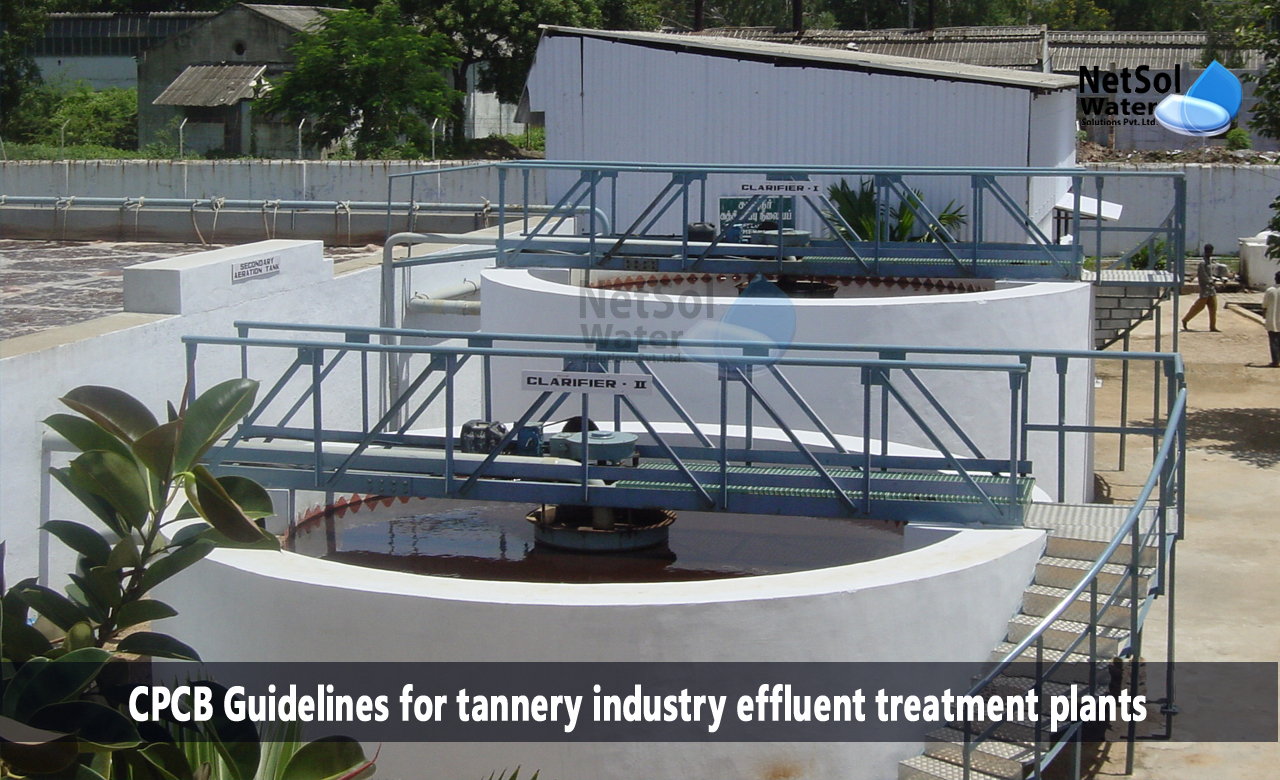Wastewater treatment is a multi-stage procedure that purifies wastewater before it enters a natural body of water, is applied to land, or is reused. Because, each receiving body of water can only accept a specific amount of contaminants before degrading, the goal is to decrease or remove organic matter, sediments, minerals, and other pollutants.
As a result, each effluent treatment plant must conform to discharge criteria, which are often established by the relevant environmental authority as permitted levels of pollutants, commonly stated as BOD-5, COD, suspended solids (SS), total dissolved solids (TDS), and others.
Characteristics of tannery industry effluent
The three main types of tannery wastewater, each with distinct characteristics, are as follows:
• Effluents from the beam-house include liming, deliming/bating, and water from fleshing and splitting machinery; they include sulphides, have a high pH, and are chrome-free.
• Tanyard effluents (tanning and re-tanning, sammying) - high Cr concentration, acidic.
• Soaking and other general effluents with low Cr content, primarily from post-tanning processes (fat-liquoring, dyeing).
What are the CPCB Guidelines for tannery industry ETP Plant?
In the execution of the powers given to the Chairman of the Central Pollution Control Board, under Section 18 (1) (b) of the Water (Prevention and Control of Pollution) Act of 1974, you are required to follow the following instructions:
• For the discharge of primary treated effluent into the ETP, all member tanneries connected to the ETP must follow the PETP rules.
• At the outlet, the ETP must meet the desired effluent discharge limits.
• If the ETP does not satisfy the stipulated effluent discharge standards at the outlet, member tanneries' permissible production capacity must be decreased, to ensure that the ETP outlet satisfies the prescribed discharge standards.
• Member tanneries that fail to achieve ETP standards, or follow recommendations regarding operations at reduced capacity, will be closed immediately.
Standards for effluent of tannery industries
|
S. No. |
Parameters |
ETP (Inlet- Tannery Effluent) |
ETP Outlet |
Standards |
|
1. |
pH |
8.39 |
7.76 |
6.0-9.0 |
|
2. |
TSS |
576 |
74 |
100 |
|
3. |
BOD |
402 |
270 |
30 |
|
4. |
COD |
1055 |
656 |
250 |
|
5. |
O&G |
105 |
37.8 |
10 |
|
6. |
Total Cr |
22.4 |
2.38 |
2.0 |
Efficient tannery wastewater treatment
PHYSICAL-CHEMICAL Procedures and BIOLOGICAL TREATMENTS are the most commonly utilized processes in tanning industry wastewater treatment, and the current trend is towards the employment of MEMBRANE TECHNOLOGIES to allow the reuse of treated water in the process.
Inorganic compounds in wastewater can have harmful and inhibiting effects, on the microorganisms used in biological treatment, hence a physical-chemical pre-treatment is used to remove them.
When streams are not separated but mixed and homogenized, the following points serve as the foundation for treatment design:
- High chromium content (primarily as Cr3+, but Cr6+ is occasionally observed). This lowers the possibilities of recycling and revaluing the biological treatment sludge.
- High organic load content. If this load is too great and the biological treatment fails to meet the performance requirements, a post-treatment stage must be built (generally membrane technologies are applied).
- High sulphate content. Using an anaerobic biological treatment is not advised. An alternative is to use desulfurization technology as part of the pre-treatment process.
- High content of solids. Solids can be greatly reduced with proper pre-treatment design. Coagulation-flocculation and primary clarifying processes (decanters or DAF-dissolved air flotation-equipment), are quite successful at eliminating solids.
The PHYSICAL-CHEMICAL PROCESS entails treating the homogenized effluent with precipitating agents, for chromium removal (sodium hydroxide NaOH), coagulants (iron chloride FeCl3 or aluminium salts), and flocculants (polyelectrolytes).
How can we assist?
Netsol Water provides a wide range of modern solutions for effluent treatment in the tannery industry, including water softener, membrane technologies, RO Plants, etc. We also educate our clients on how to avoid water pollution, by taking a sustainable strategy, reuse mechanism, and utilizing advanced water and wastewater treatment methods.
Netsol Water is Greater Noida-based leading water & wastewater treatment plant manufacturer. We are industry's most demanding company based on client review and work quality. We are known as best commercial RO plant manufacturers, industrial RO plant manufacturer, sewage treatment plant manufacturer, Water Softener Plant Manufacturers and effluent treatment plant manufacturers. Apart from this 24x7 customer support is our USP. Call on +91-9650608473, or write us at enquiry@netsolwater.com for any support, inquiry or product-purchase related query.



